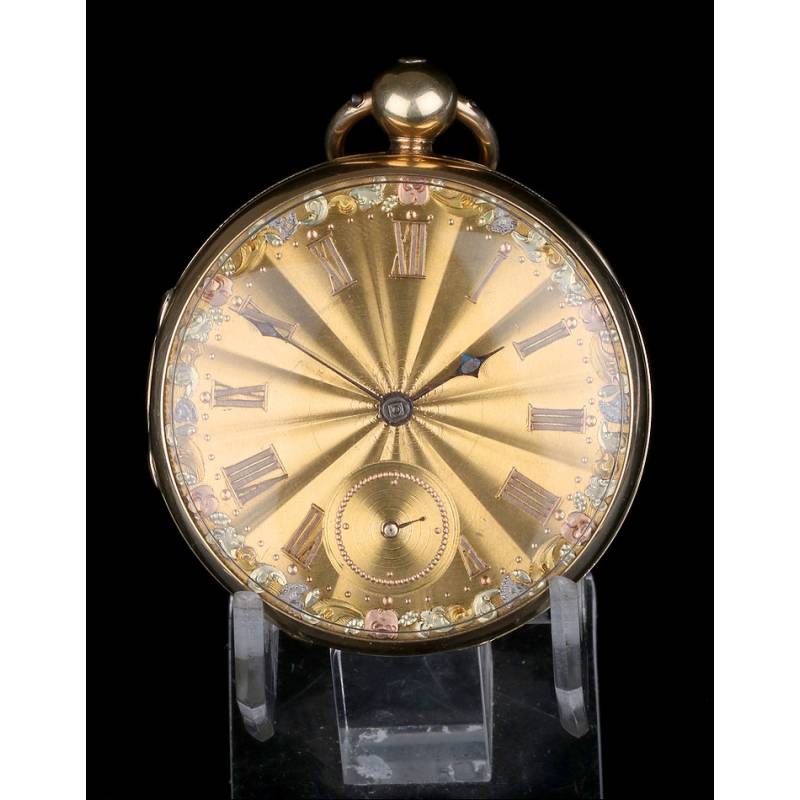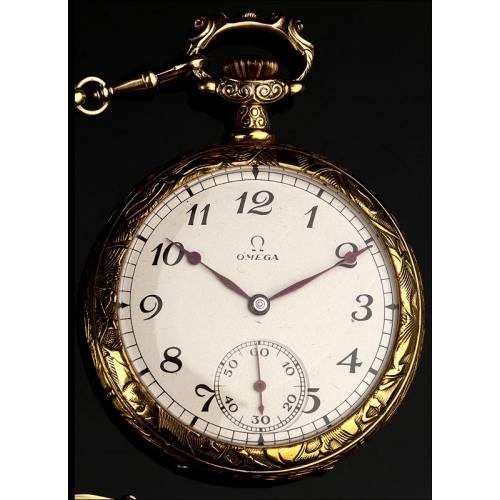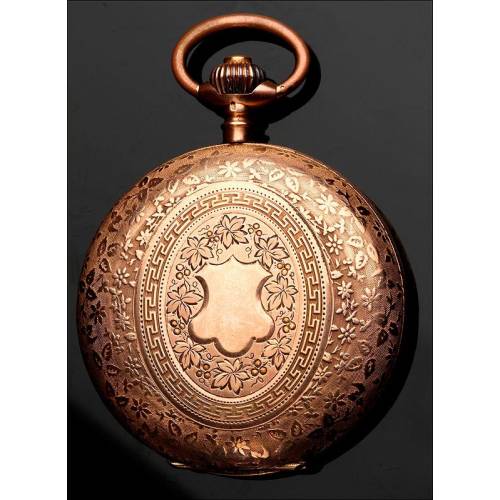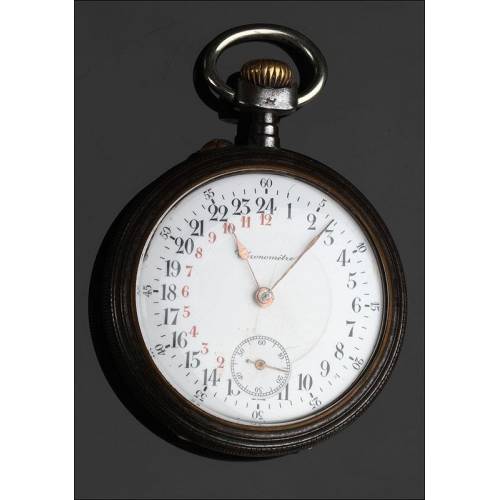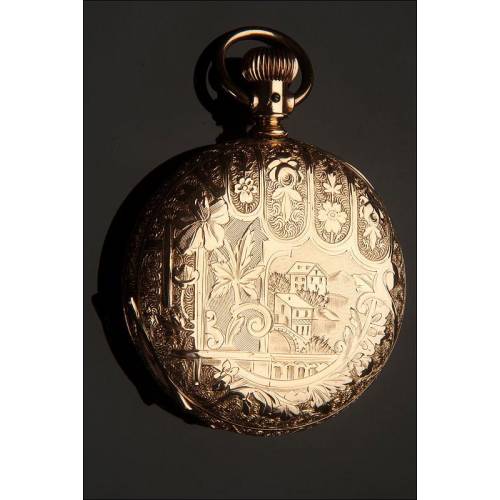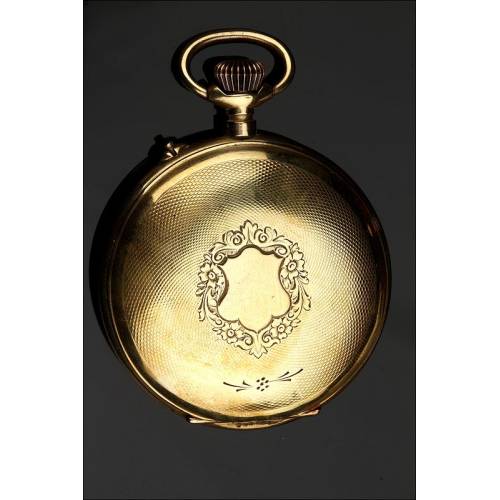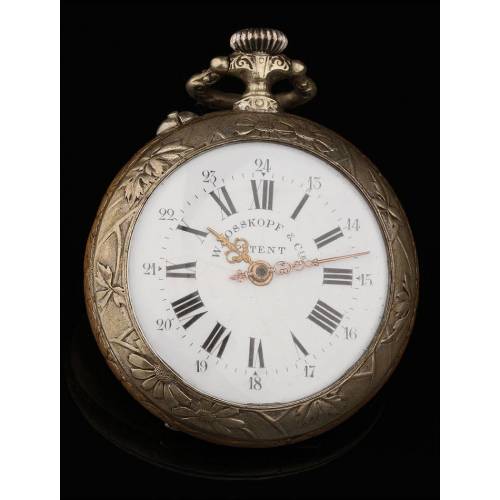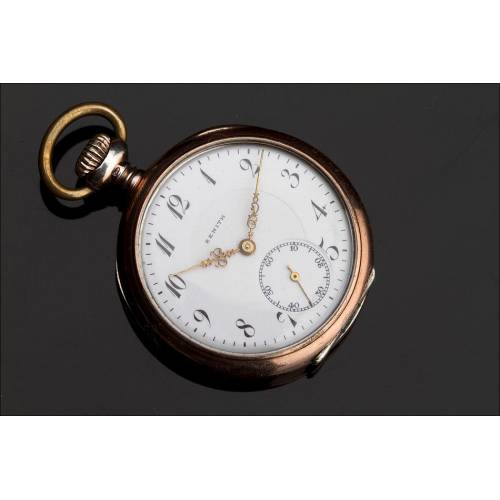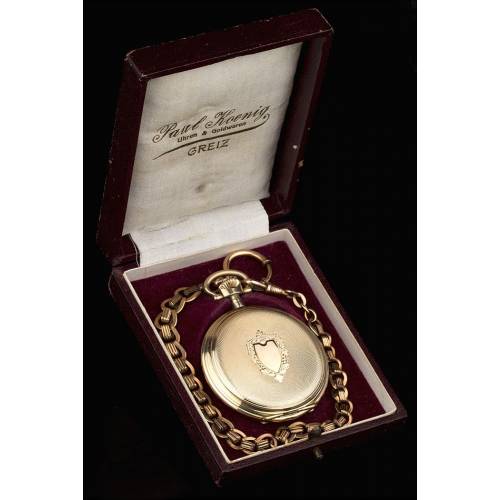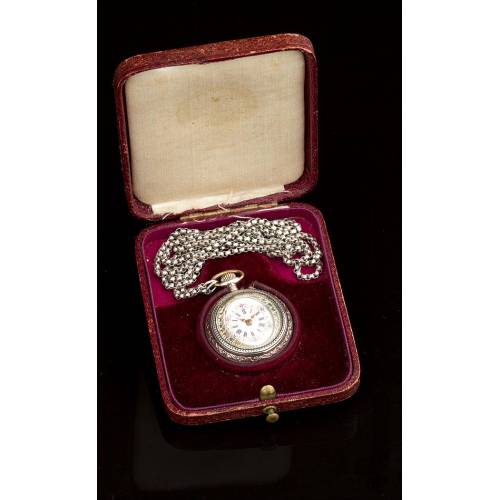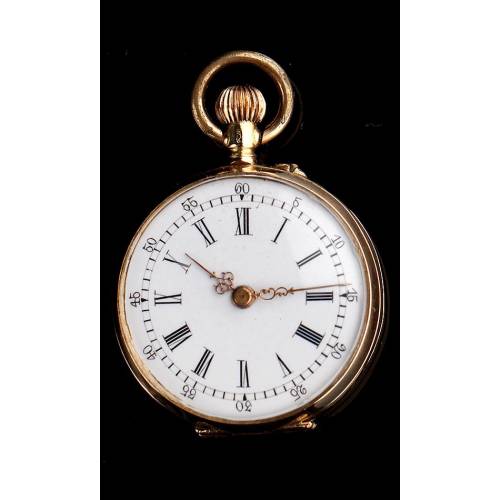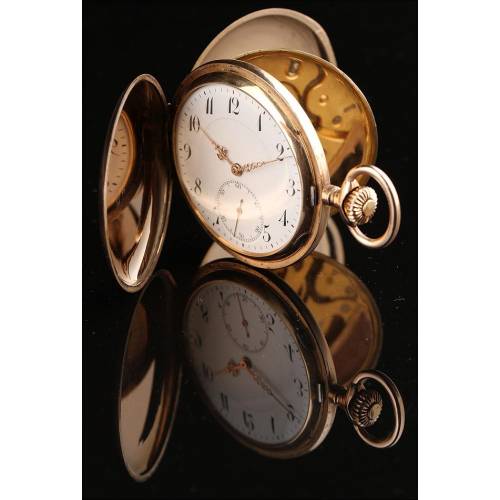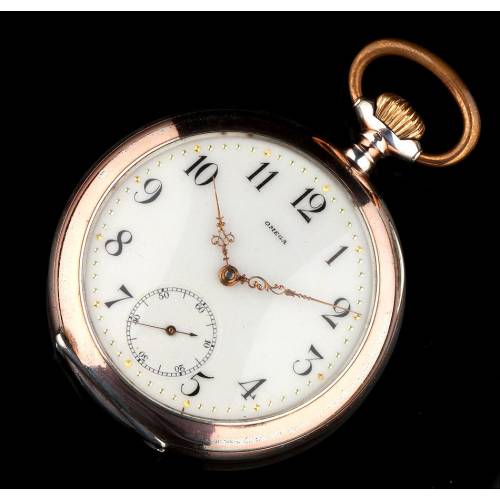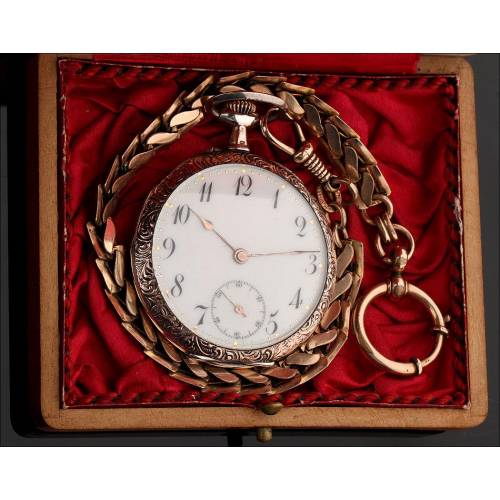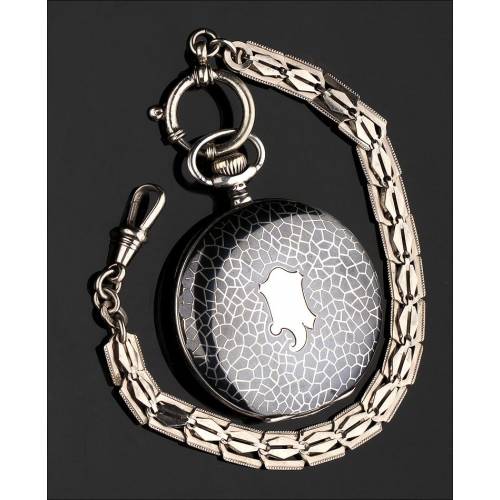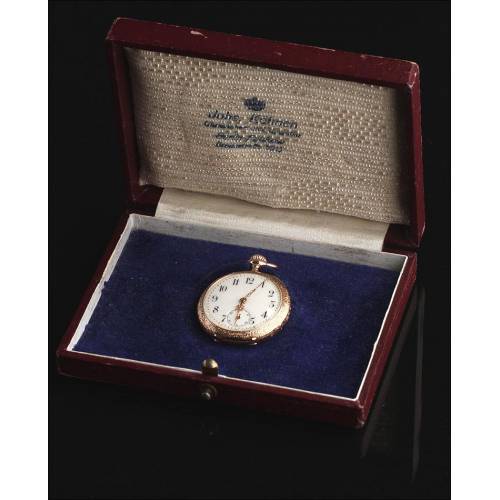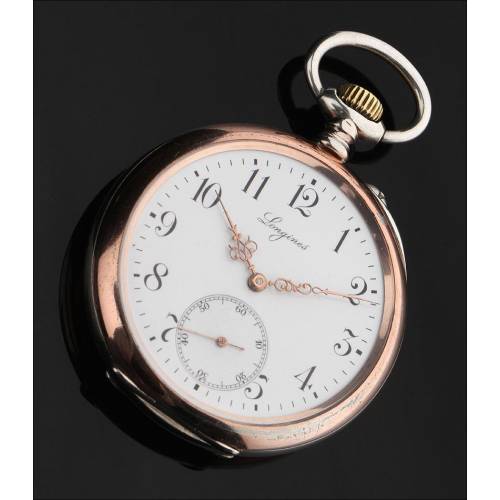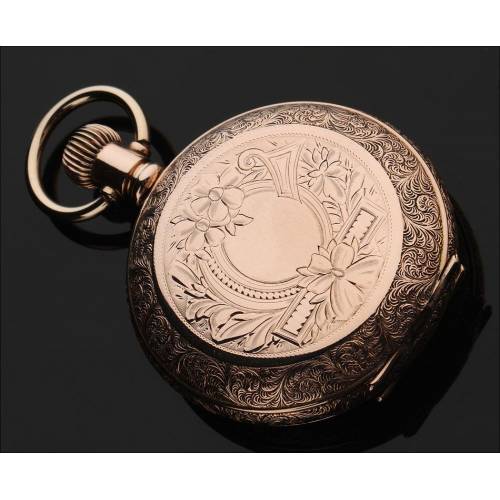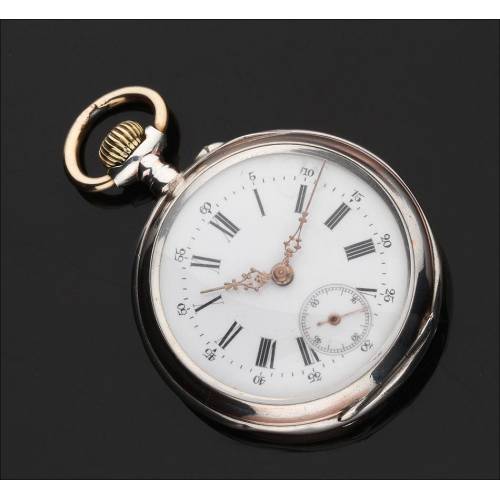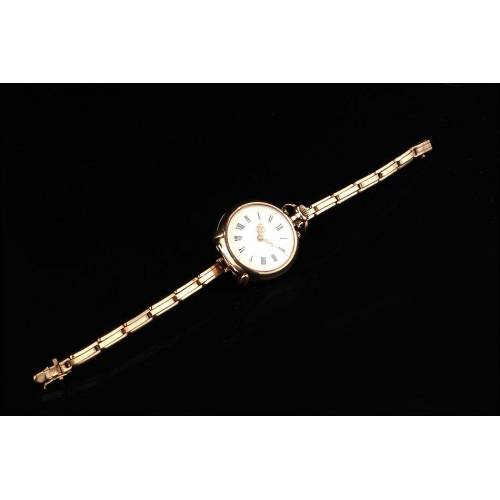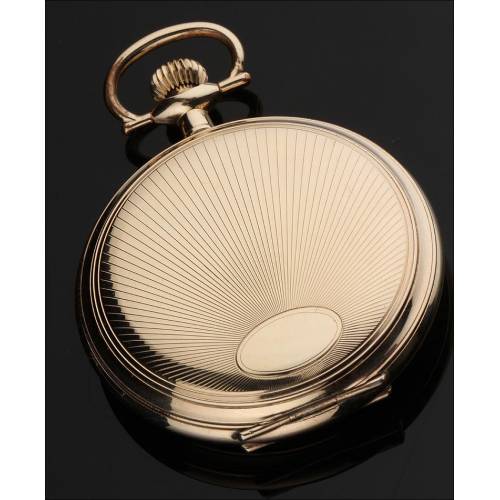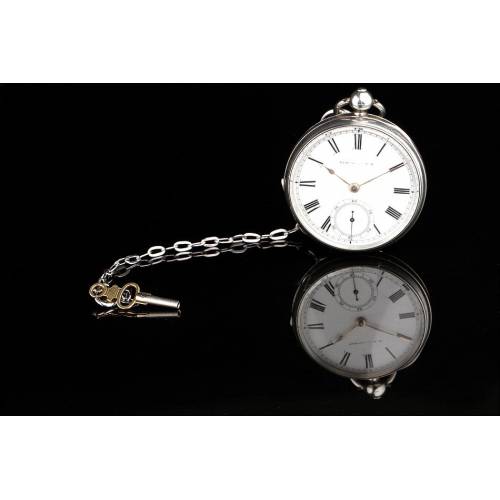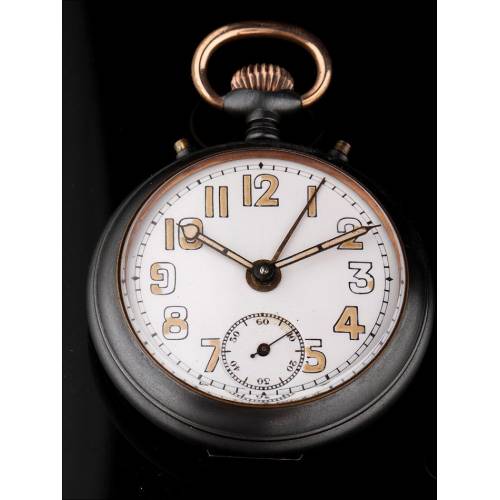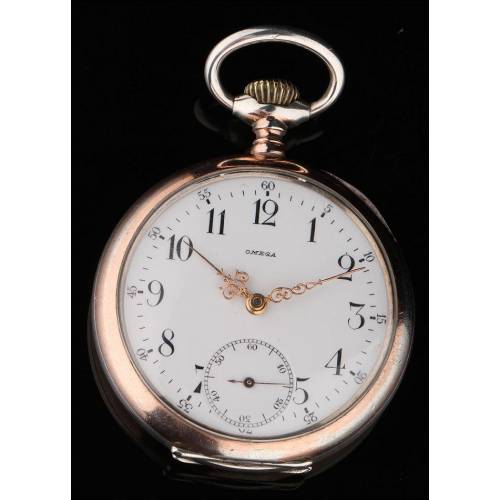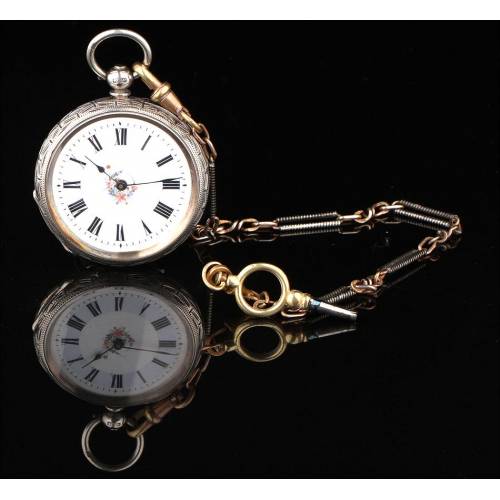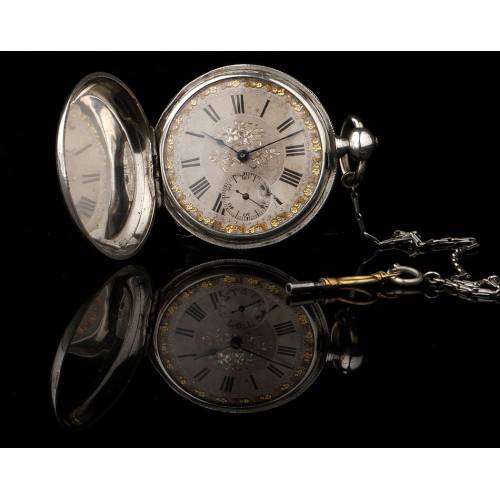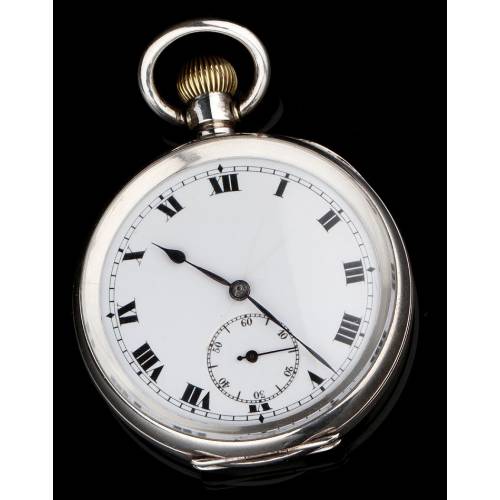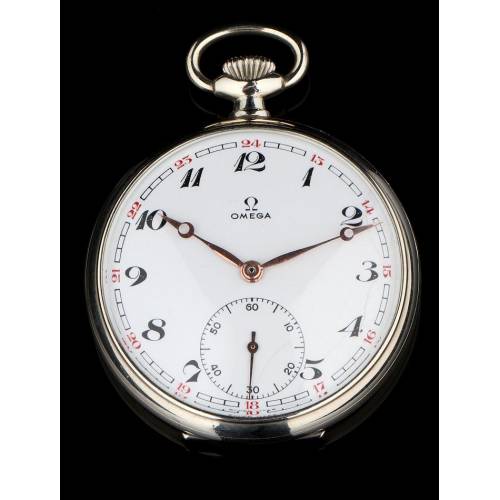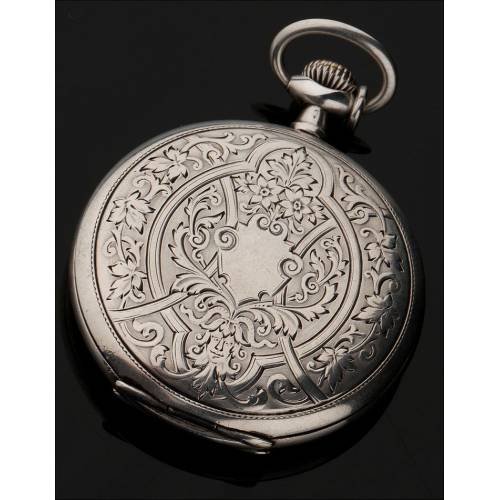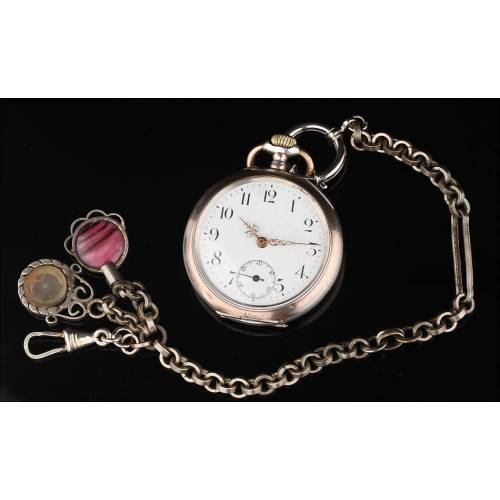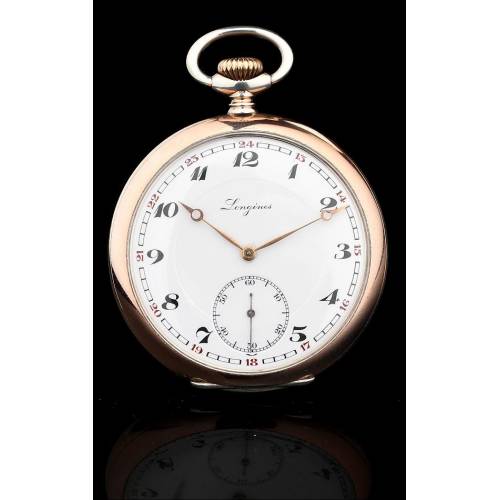C-809
Antique 18K Pocket Watch by Henry Sharples. England, 1833
Gentleman's watch, 18kt yellow gold, with key. Pocket watch with fancy gold dial.
Sold!
Gent's, 18k yellow gold, key wound, open face pocket watch with fancy gilt dial. Case attributed to Joseph Lew Samuel of Liverpool. Watch made by Henry James Sharples, Manchester, England, circa 1833/34.Case:50mm, three leaf, 18k solid yellow gold. Round open face pocket watch with solid gold ball pendant with push button and round gold bow placed at the twelve position.The back of the outer case is engraved with a circle at the center, while the inside of the cover it has the following hallmarks: Chester Assay office mark of a shield with a flat top and angled narrowed sides, a worn Leopard's head which was used in Chester along with the Assay Office mark until 1840, when it was dropped. The crown and 18 for the 18k gold mark, upper case, "P", for the Date letter mark of 1833/1834. The casemaker mark of 'JLS' most likely represents Joseph Lewis Samuel Liverpool working c. 1835-1858. the cuvette is similarly marked on the inside and has a winding aperture on the cover also.Dial:Fancy multi-color gilt dial with sun-burst effect throughout the dial and raised gilt Roman hours, dotted minute ring, floral wreath fills the periphery of the dial, subsidiary seconds at 6, solid blued steel stag beetle hands and as is usual the dial is unsigned.Movement:Unsigned full plate movement with white metal bi-metallic balance wheel with jeweled movement in screw settings, a narrow, stepped, wedge shaped engraved balance bridge marked 'PATENT', a finding one sees on such movements made in the early part of the 19th century in the Liverpool region. The measure ruler is on the plate with lever for adjustment.Condition:Case excellent. Dial - Superb, mint condition. Movement - Excellent. In good operating condition and keeping the time.A beautiful early example of such fancy dial watches made in England. The dating was a bit difficult because such watches were made through the end of the 19th century, but the presence of the Leopard head along with the Chester Assay Office mark convinced me that his case had to be made prior to 1840, after which the leopard disappears from usage in Chester.Date : Mid 1830s

